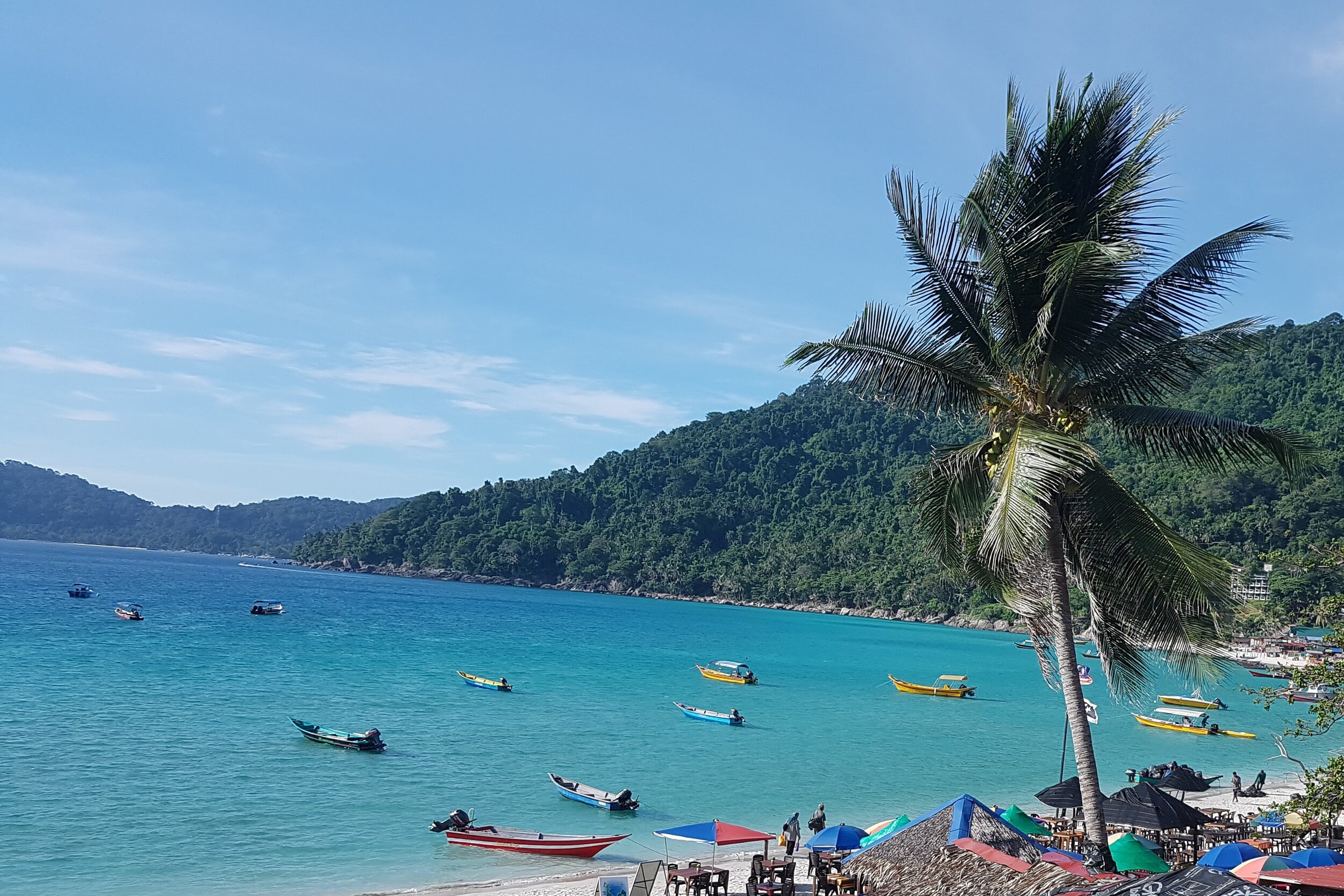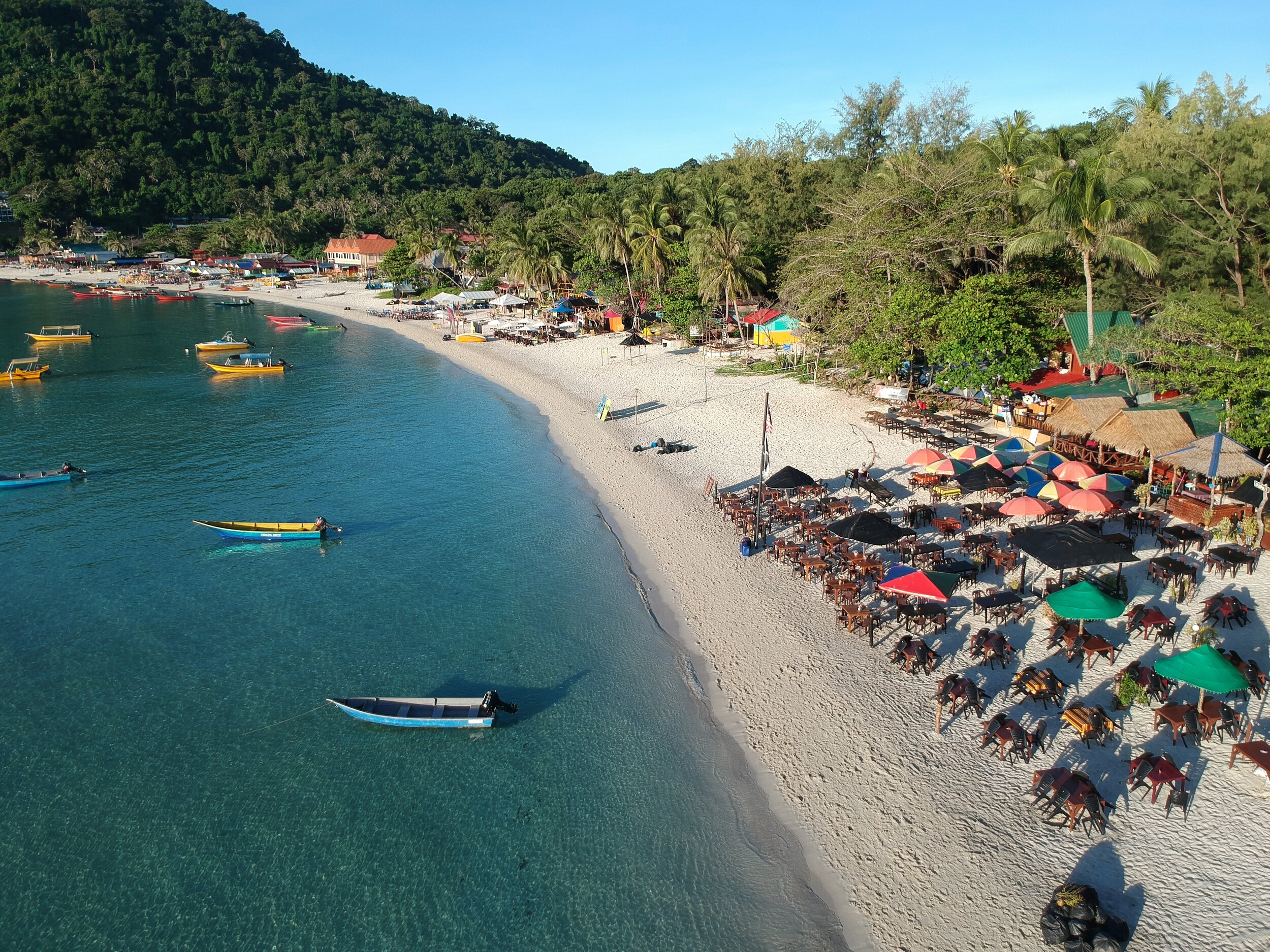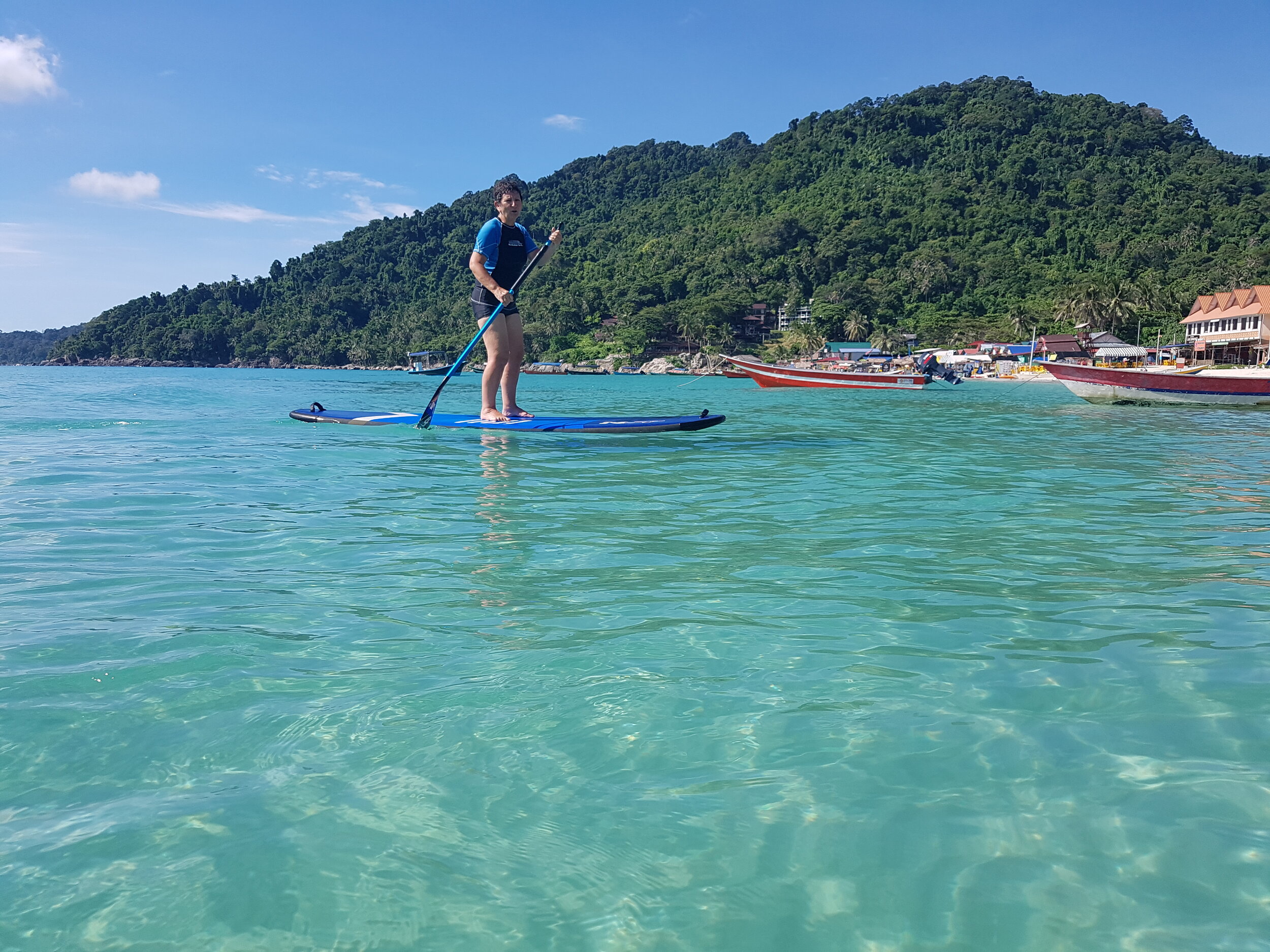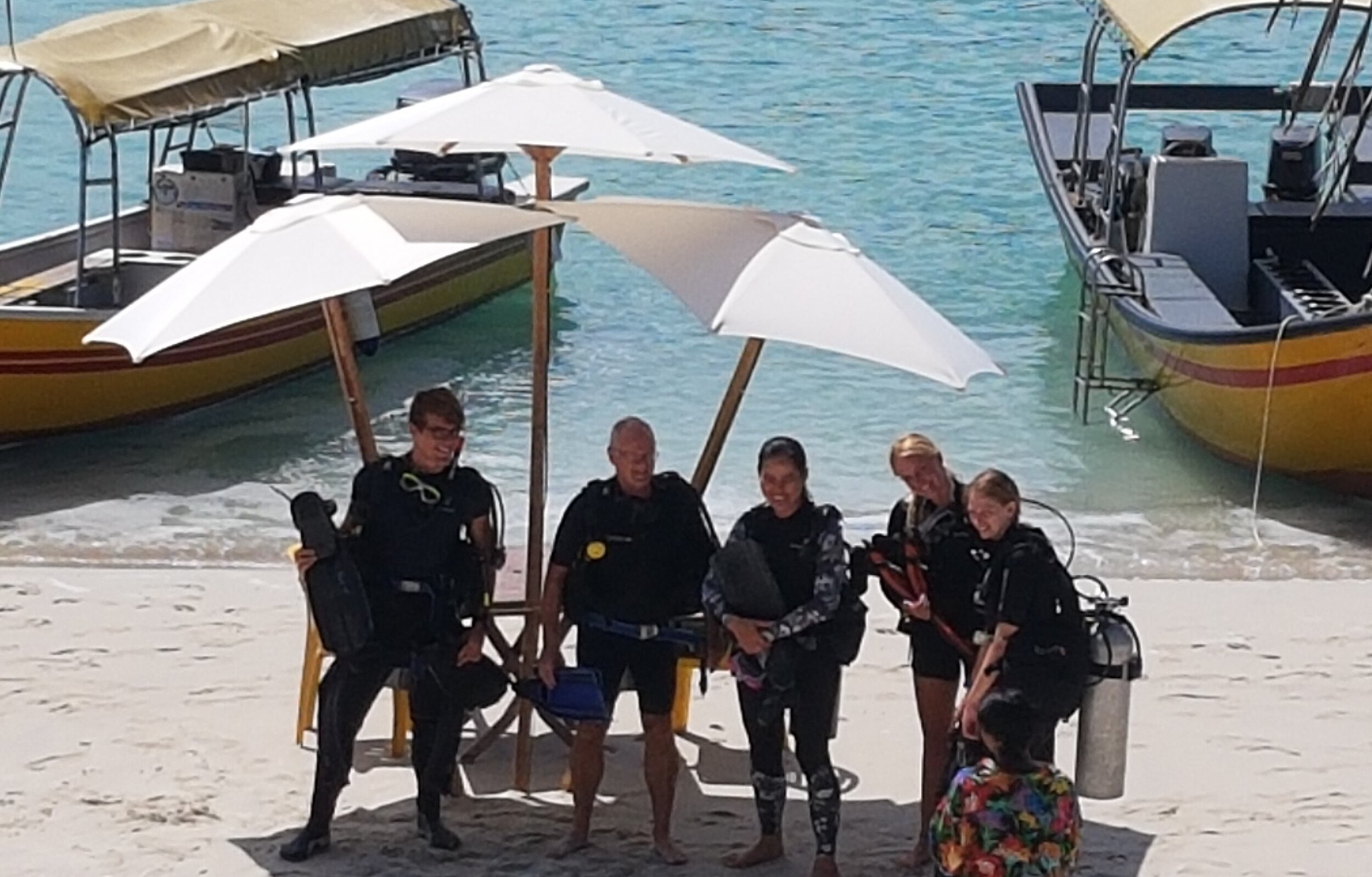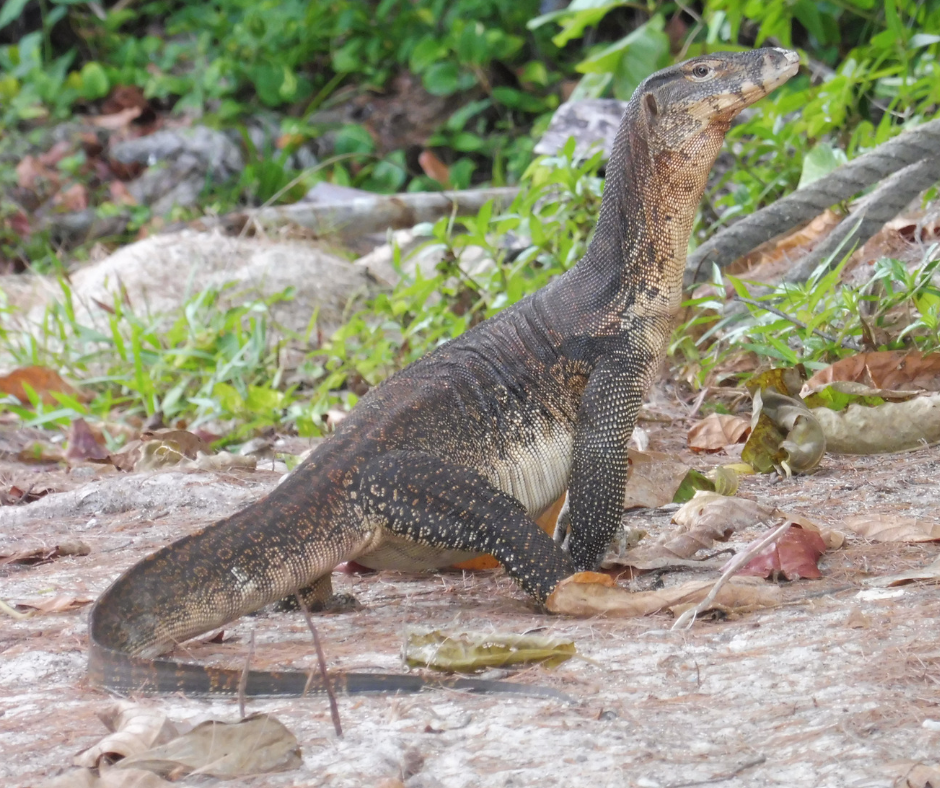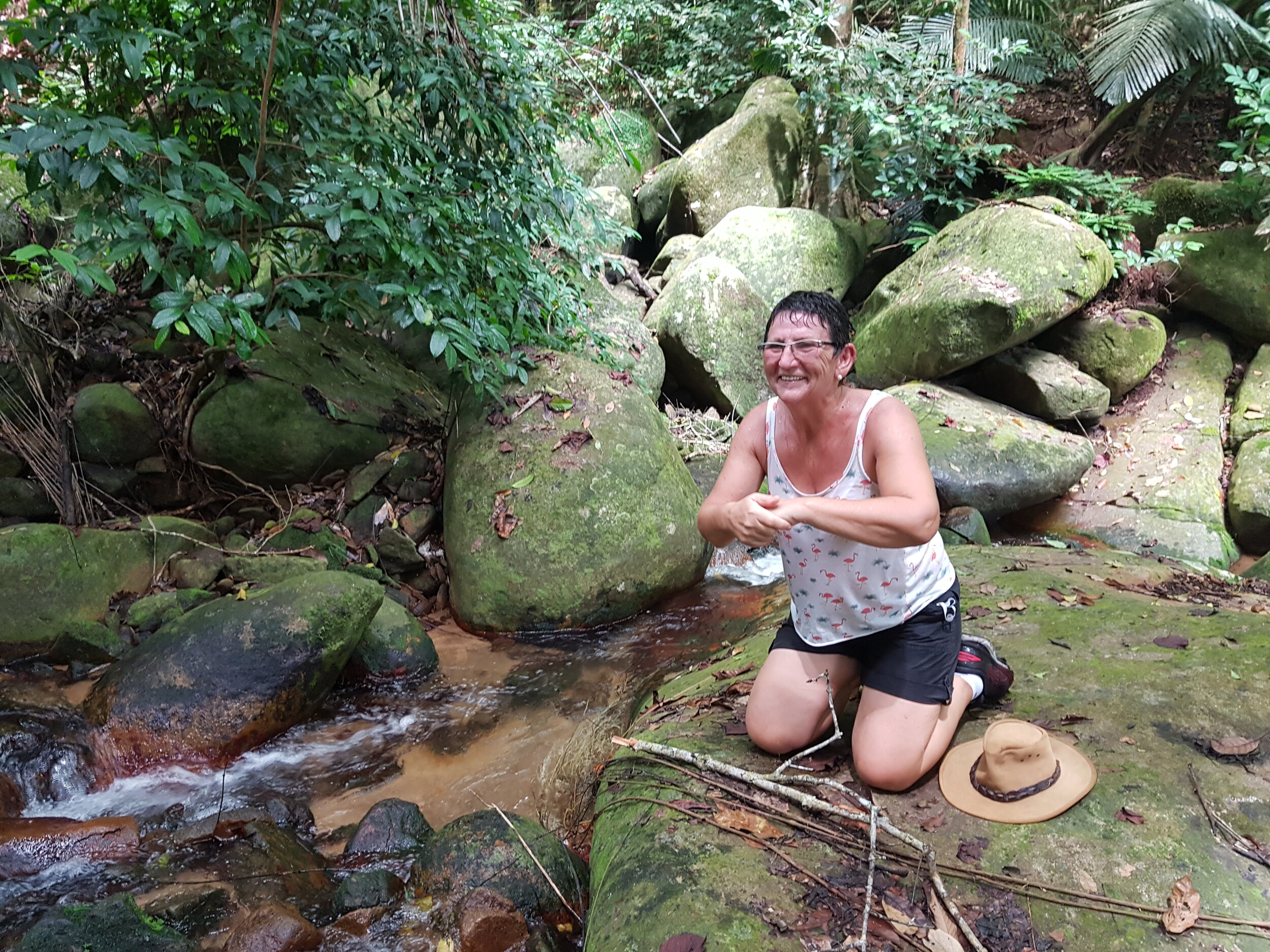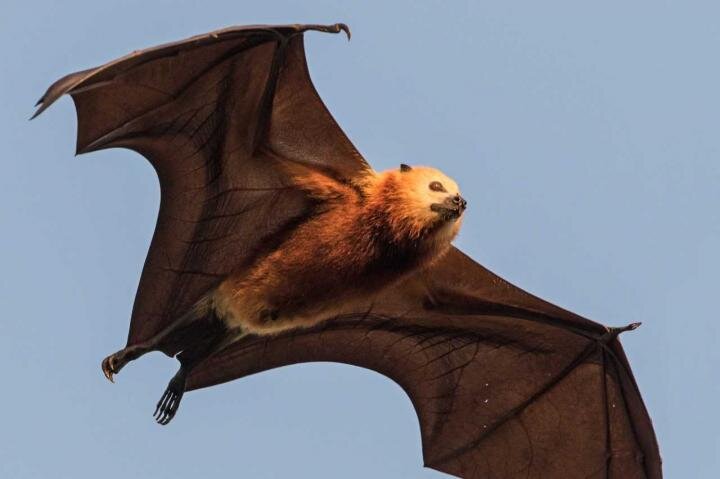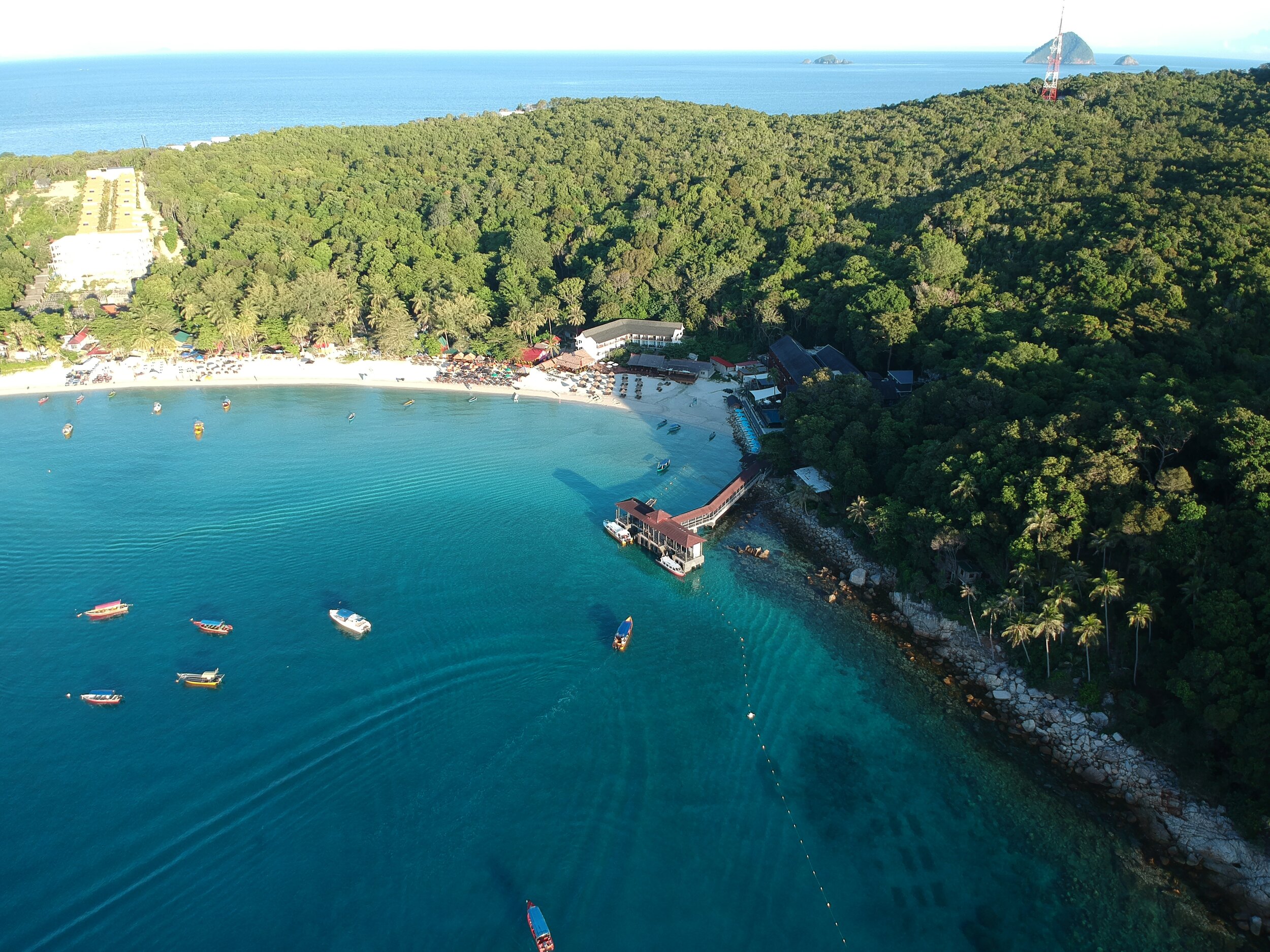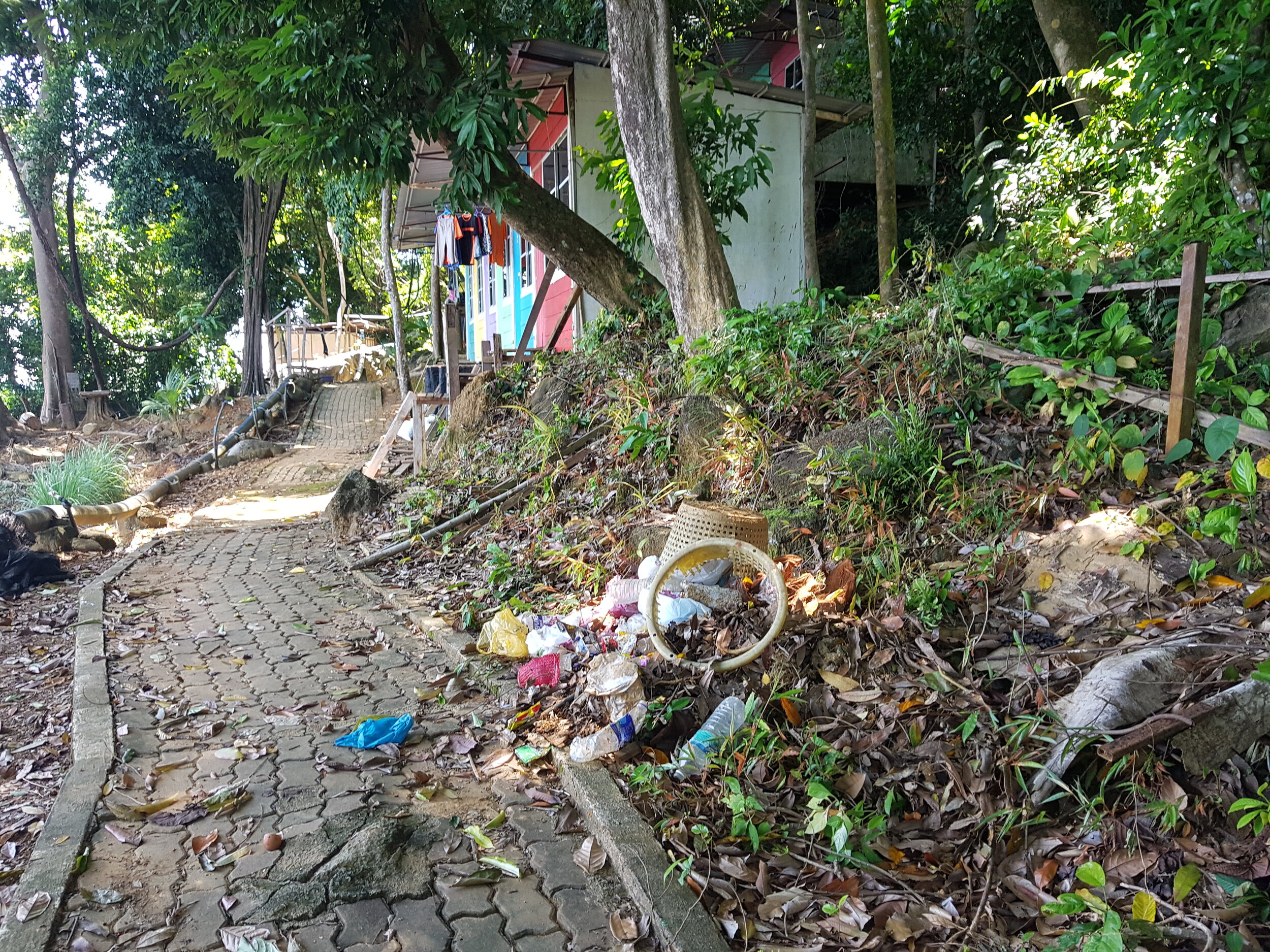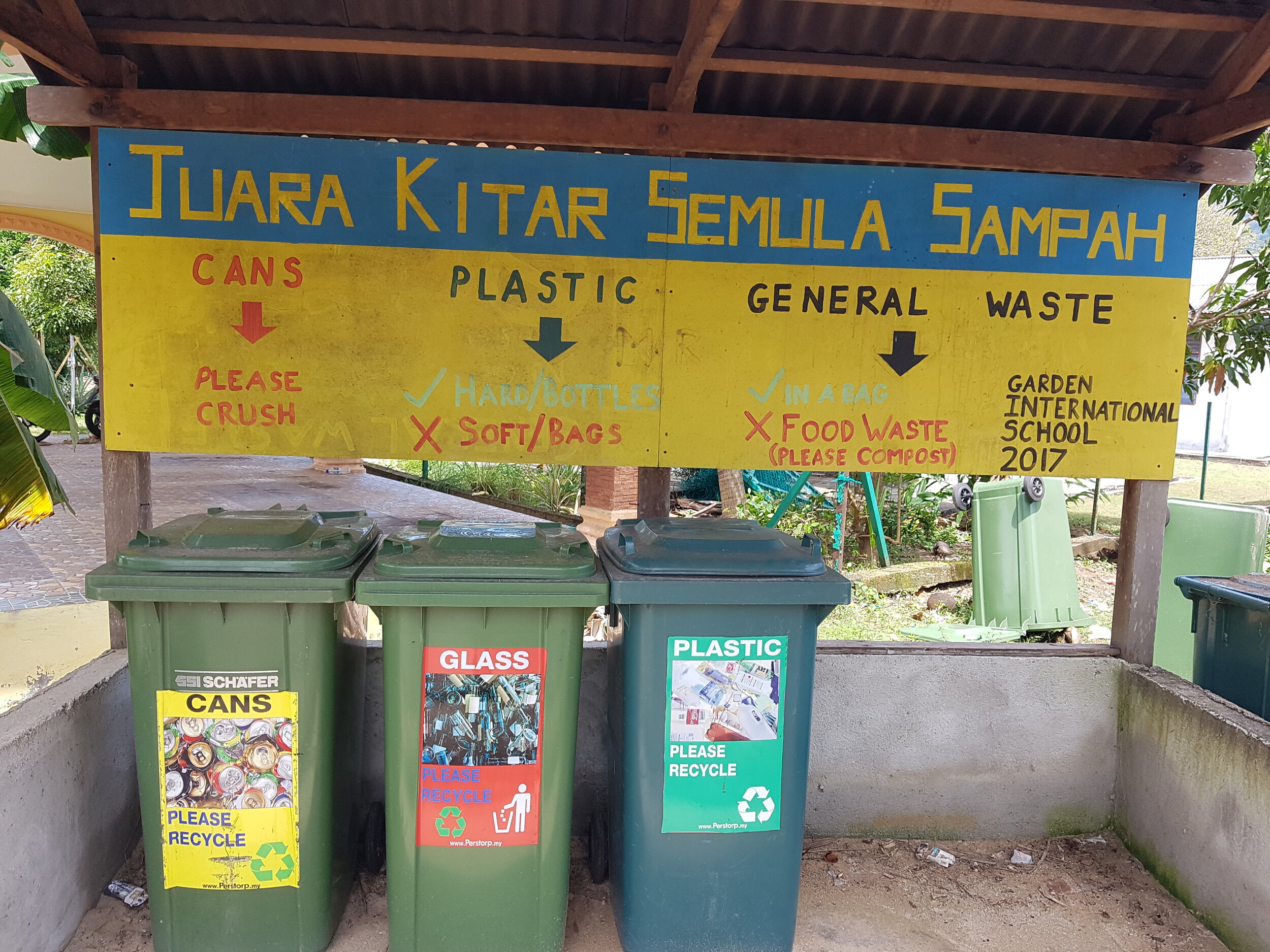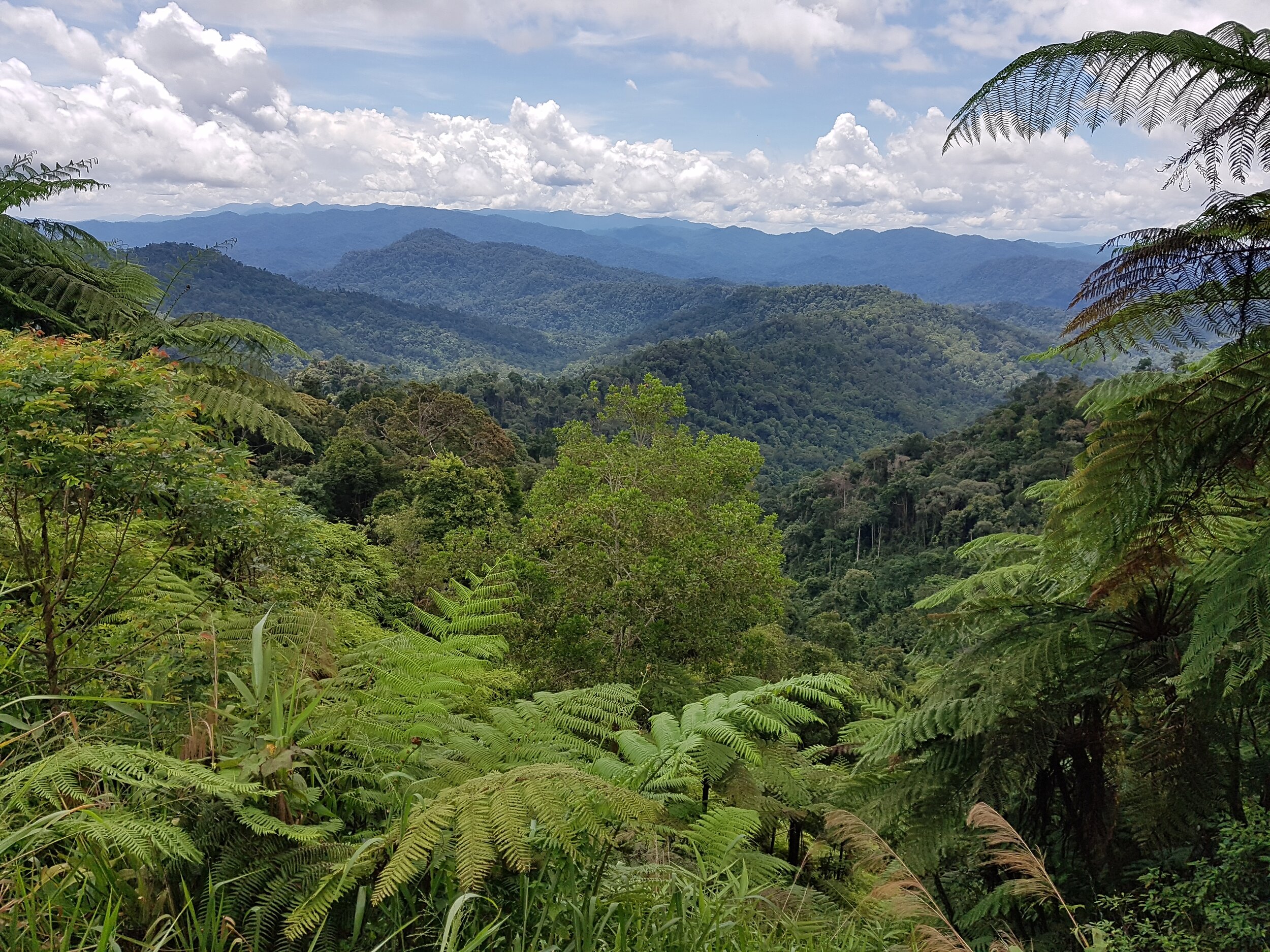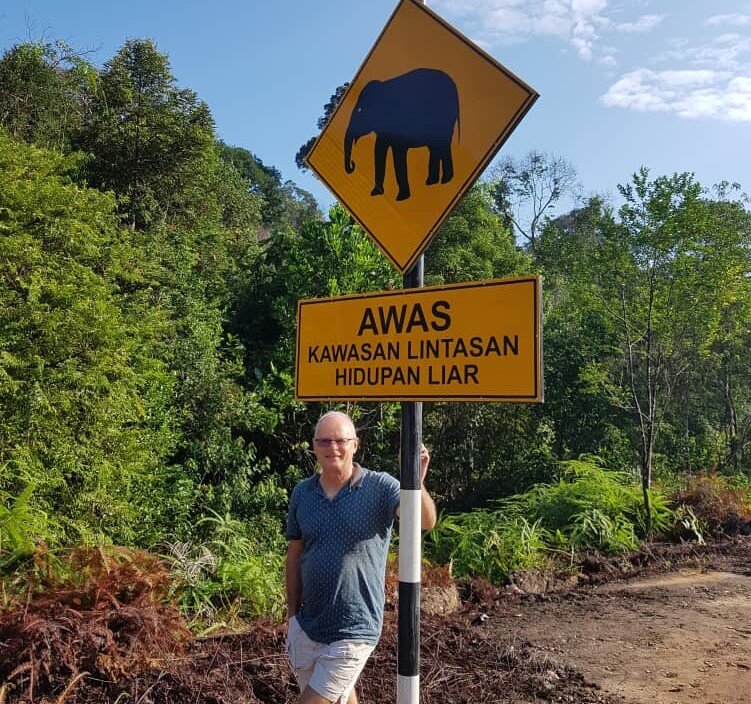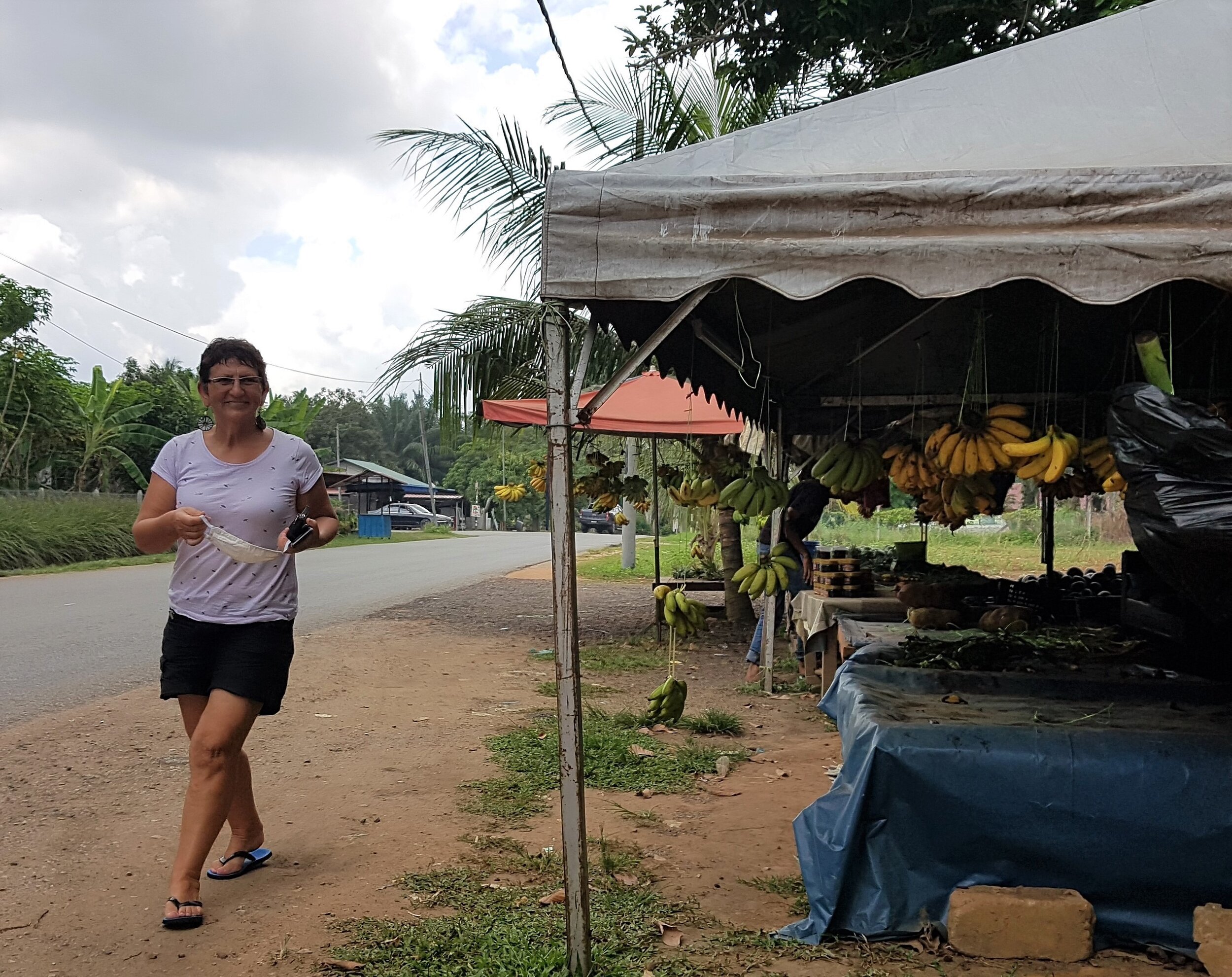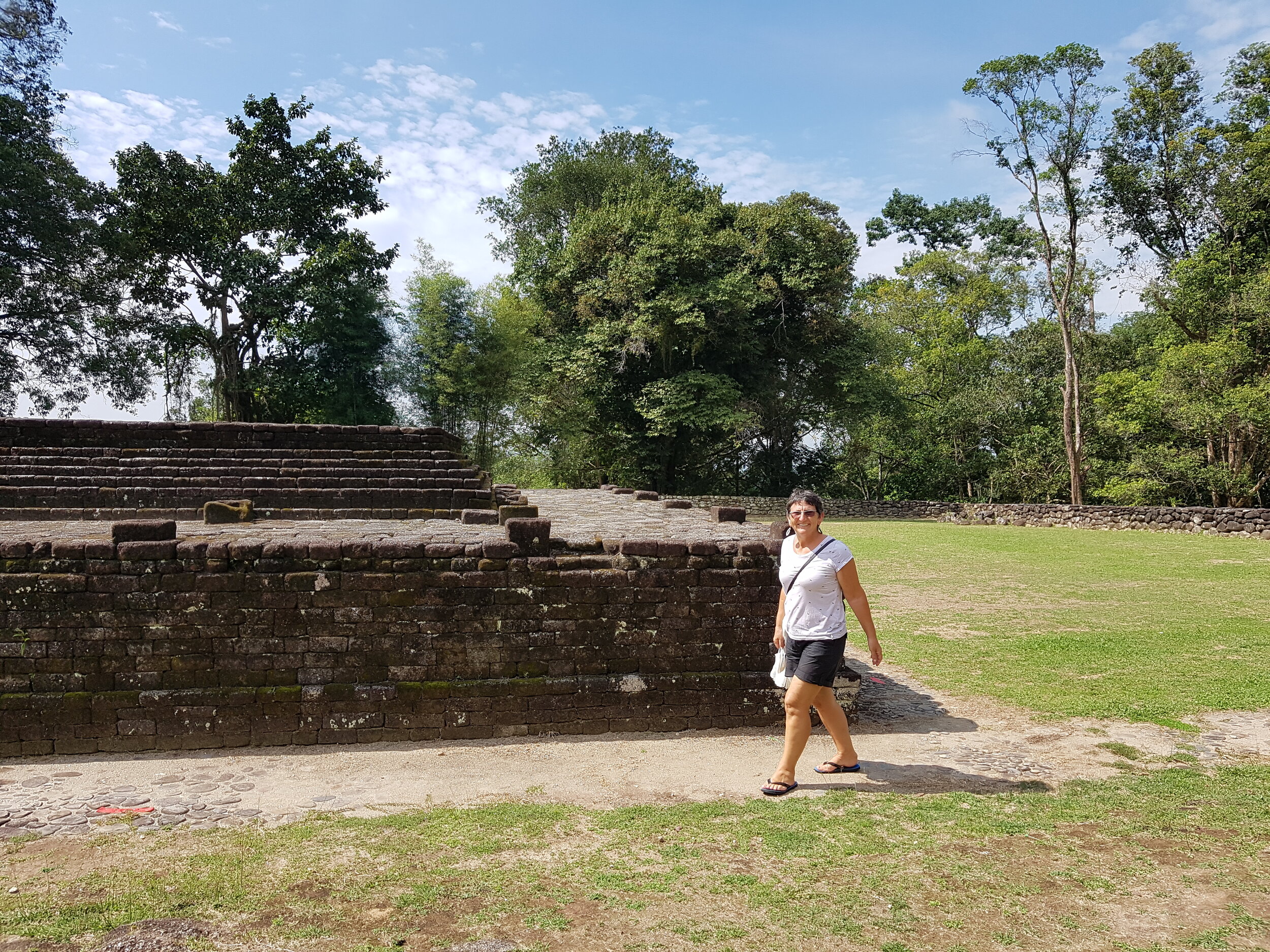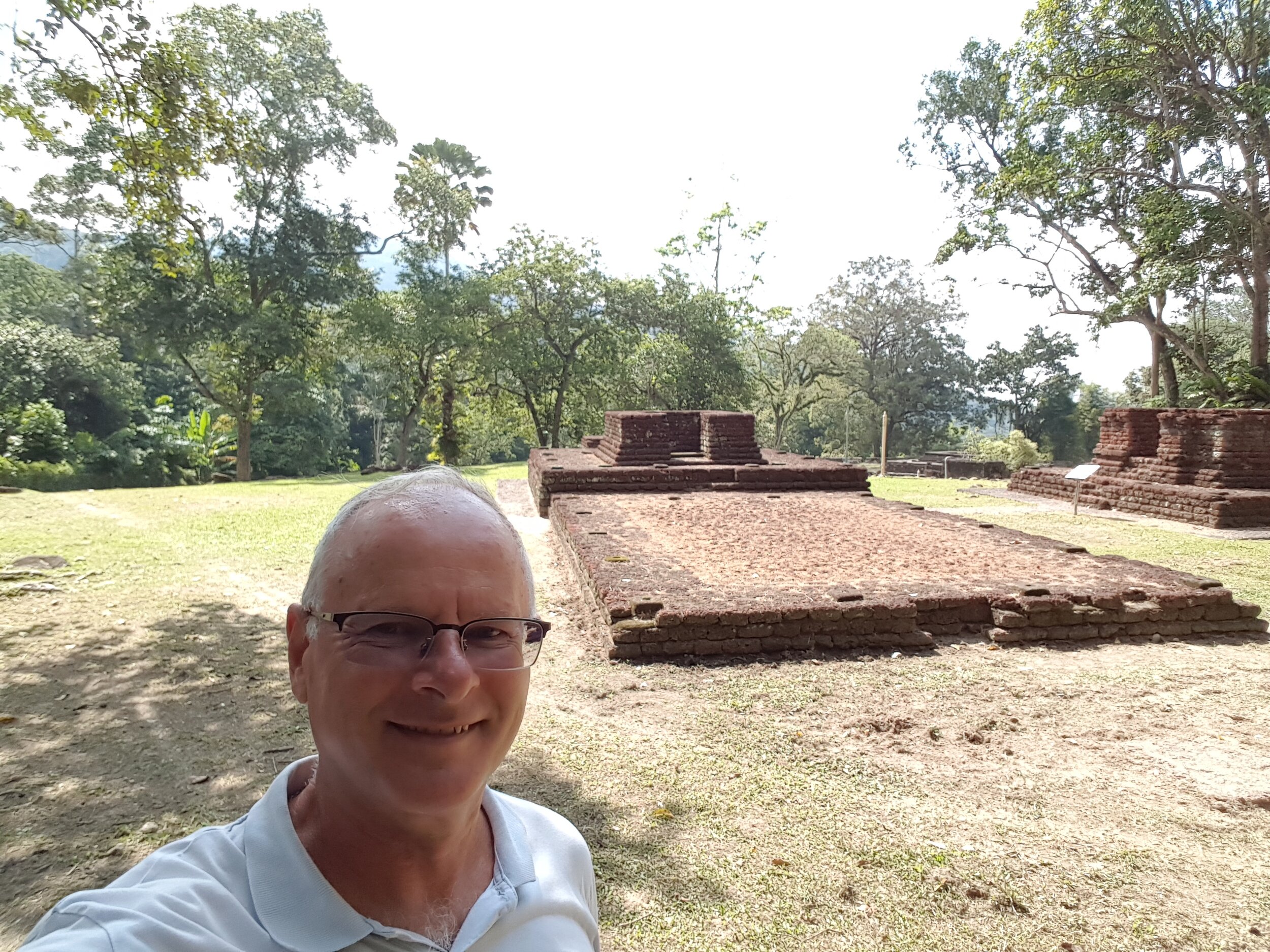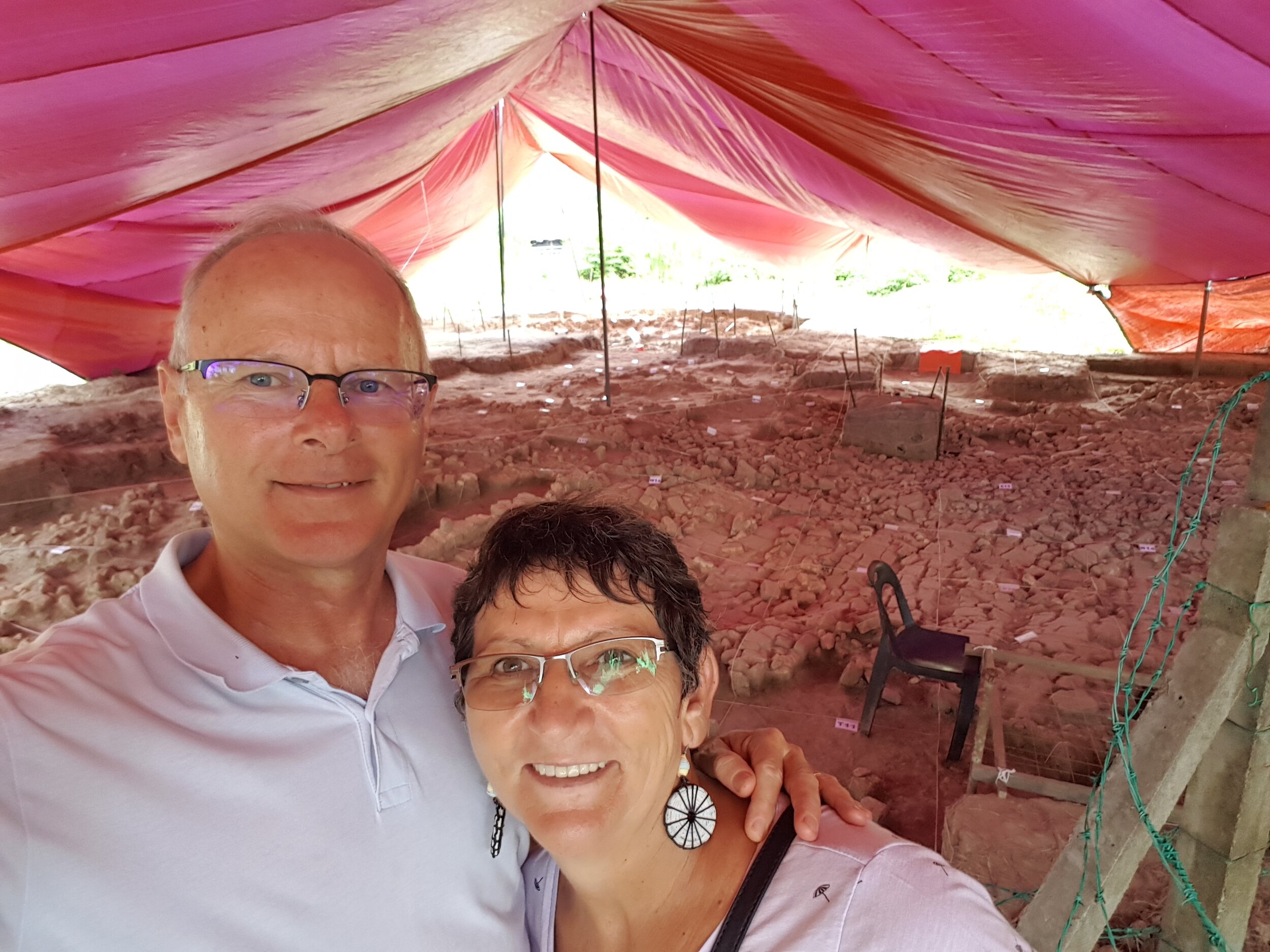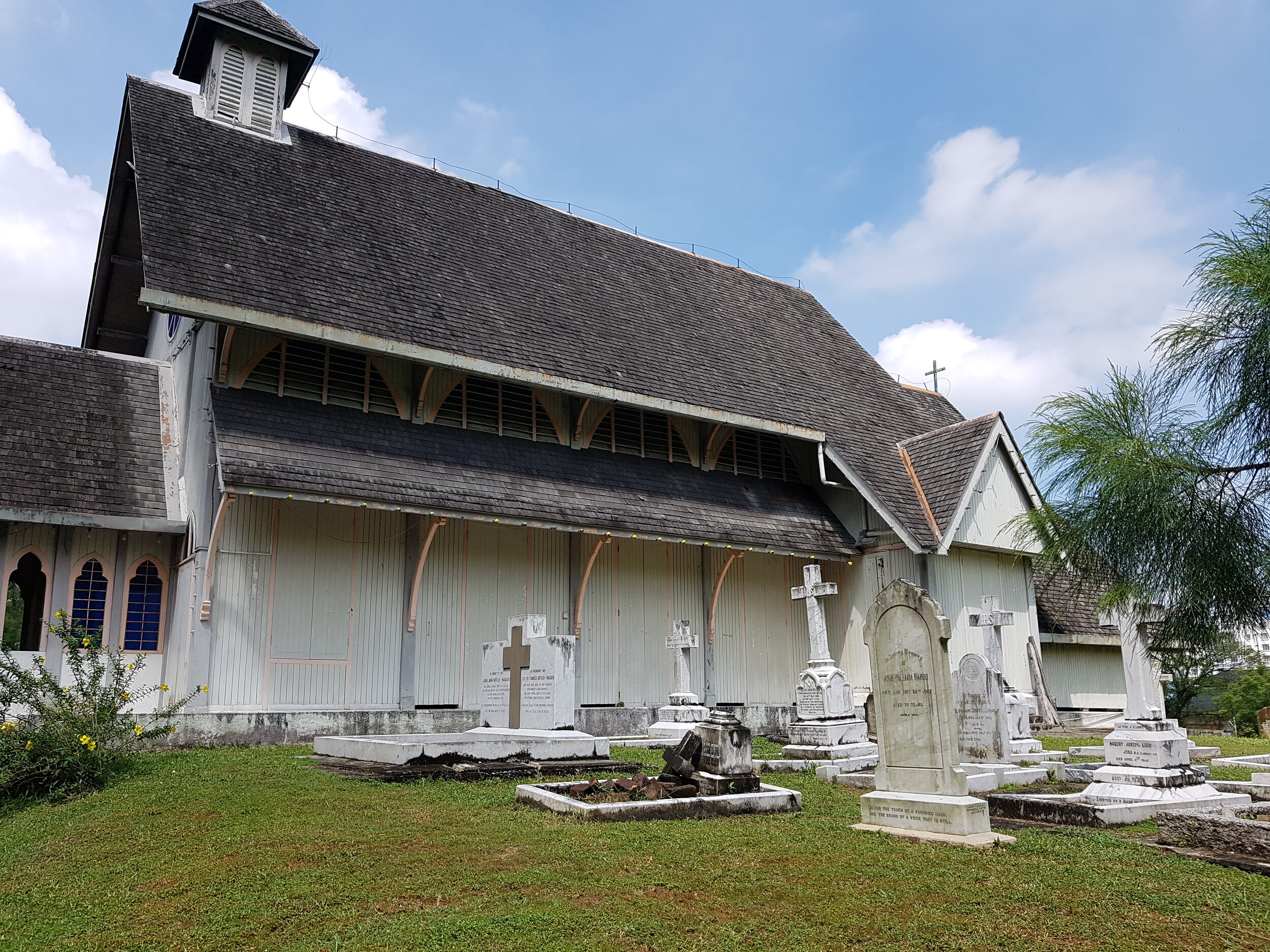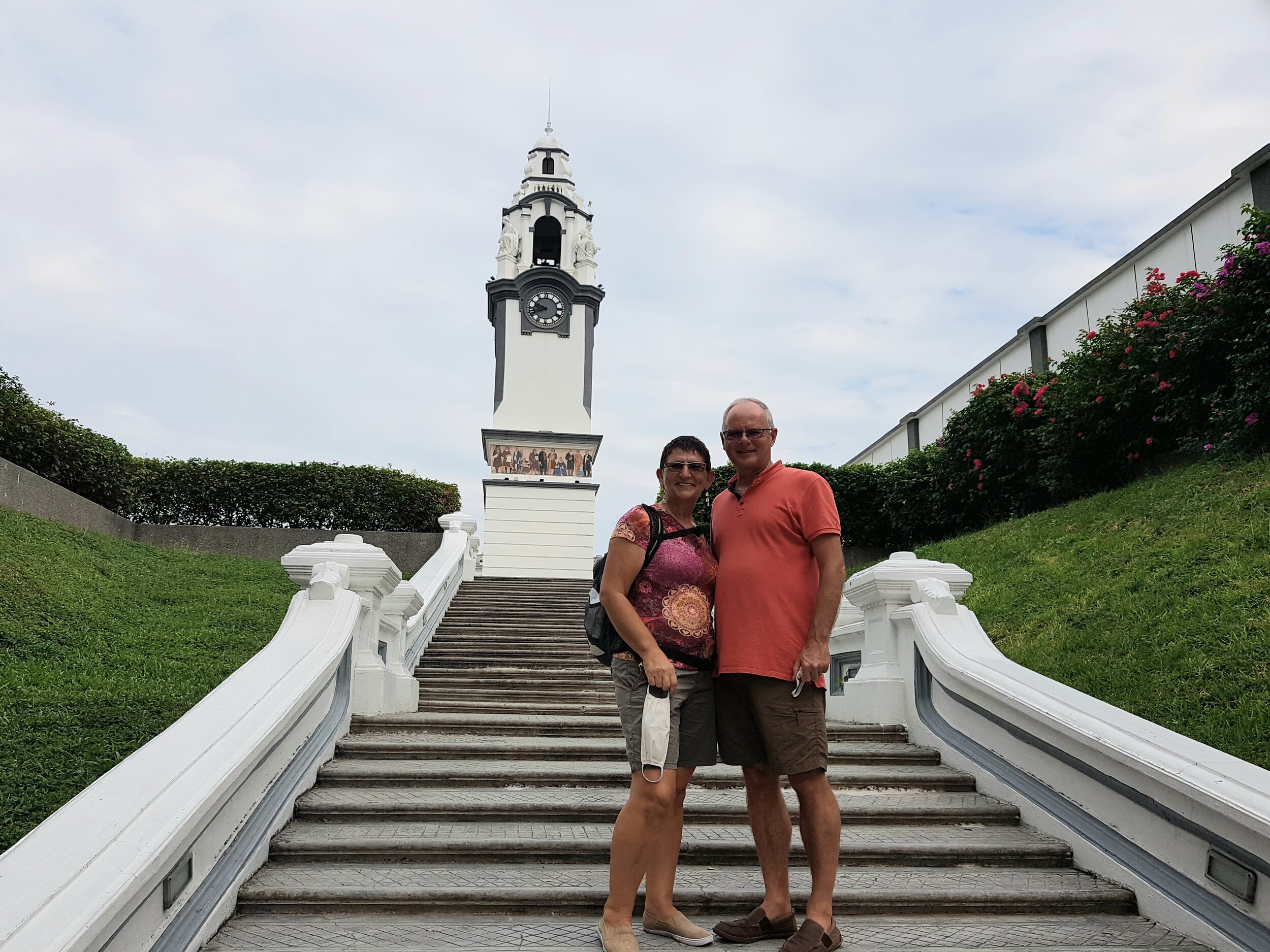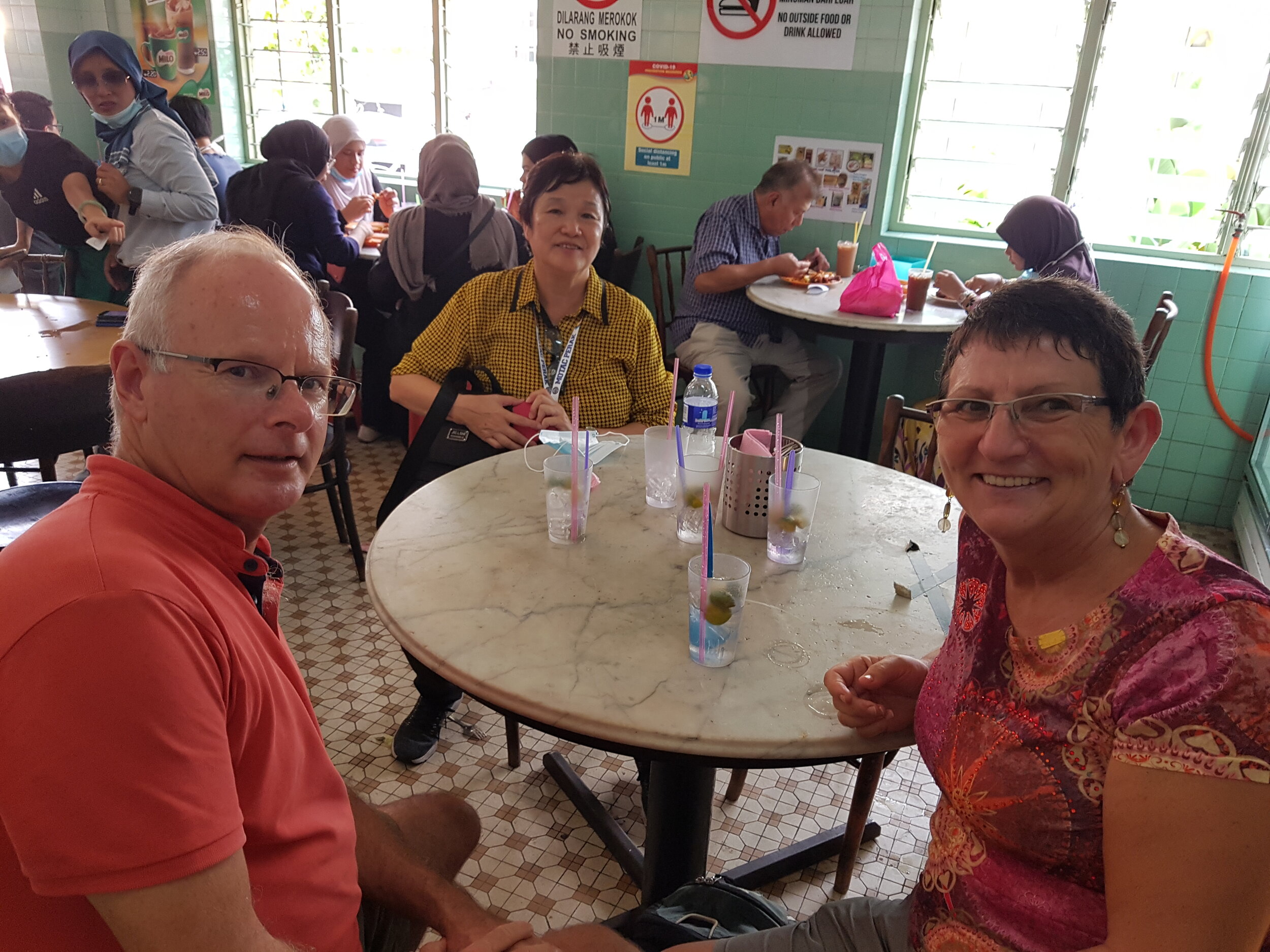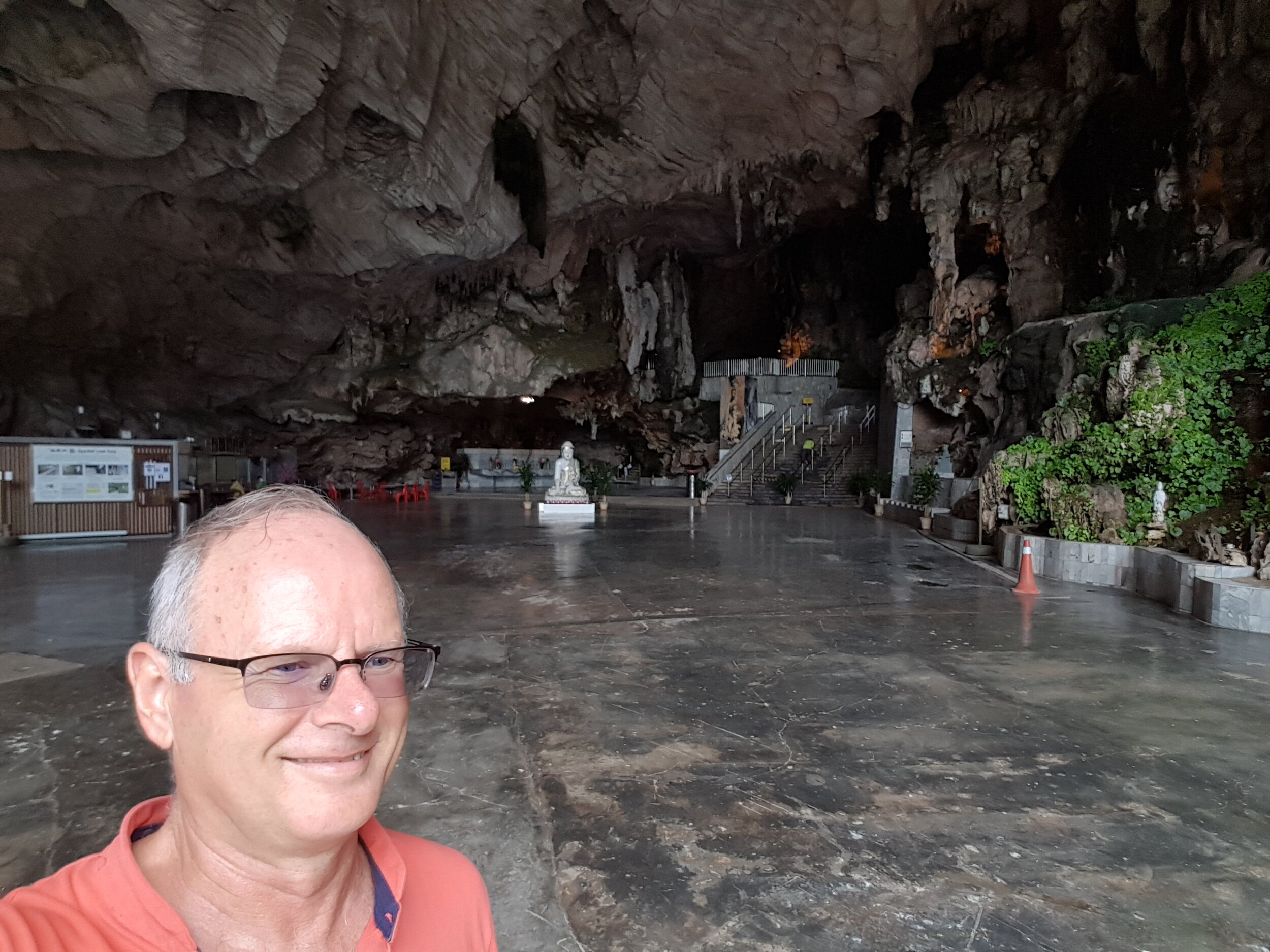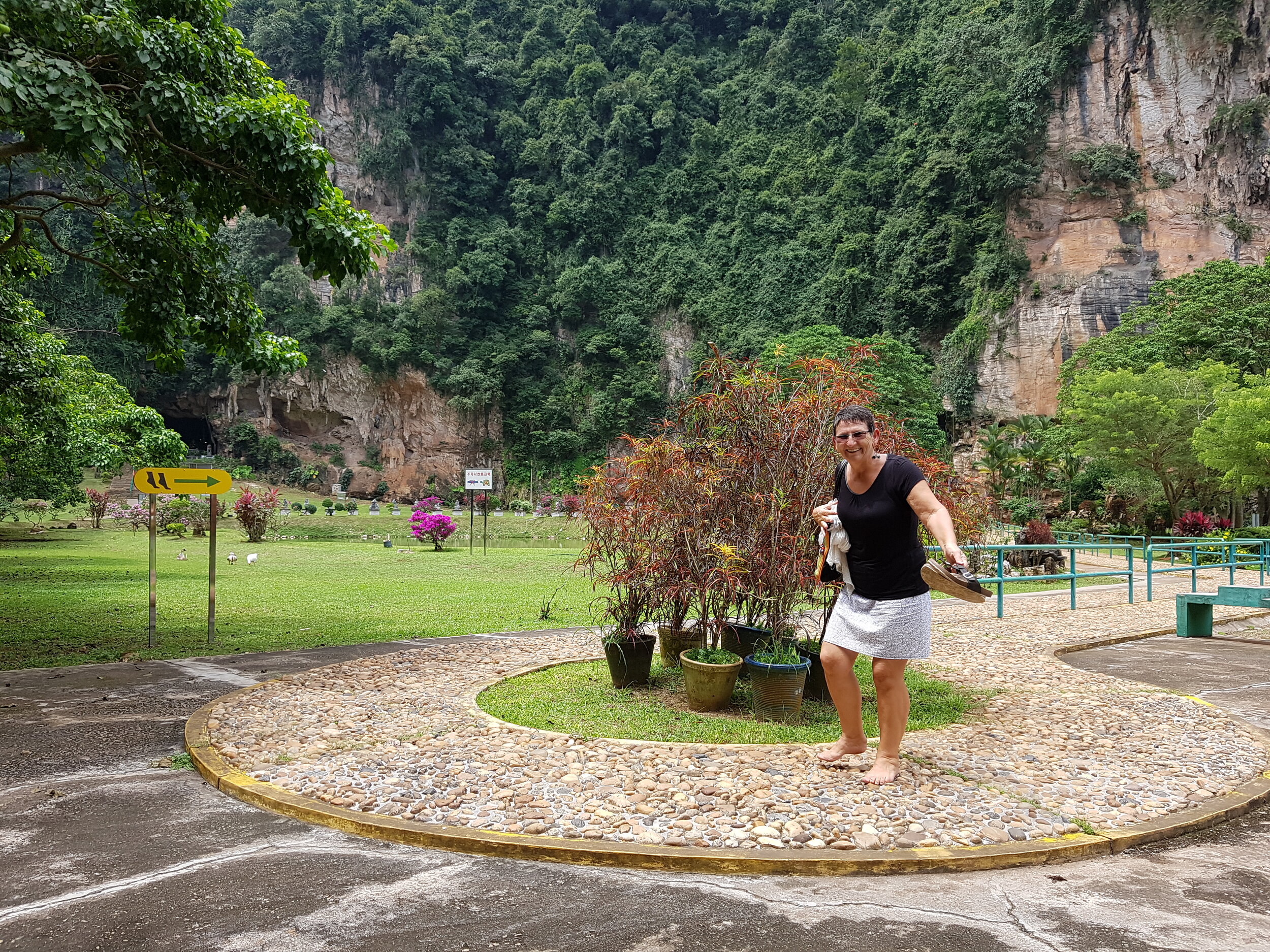With plenty of affordable flights and interesting destinations to visit in South East Asia, we spent most of our trips outside Malaysia. However, with the corona virus travel restrictions in place, we cannot travel aboard. Instead we supported the local tourist industry. We drove up the East coast visiting several islands in the South China Sea, crossed the mountainous core of the peninsula along the Thai border to the West coast and drove down back to Kuala Lumpur. A 2000 Km journey on highways, winding country roads, taking ferries, walking, biking and hiking to explore the nature, cultural places and towns.
The corona virus pandemic has changed the way we go about our travels. Francien and I only visit places where we will meet few people, many times off the beaten track destinations, mostly outdoors. We are also in the fortunate position to travel during the weekdays, avoiding the busy (long-)weekends. Washing our hands, using sanitizers, wearing facemasks, keeping distance to others, using our QR scanner to register when entering enclosed buildings and maintaining highest possible hygiene standards in public places is what we not only do when back home in Kuala Lumpur. We were curious to see for ourselves how different the people we met during this journey handled this situation.
A moment captured on Tanjung Jara beach
The first leg of our trip was a five-hour drive in our car from Kuala Lumpur to Mersing. Driving from Kluang to Mersing, the endless palm tree plantations made way for dense tropical rainforest. The traffic signs warned for crossing tapirs and elephants.
In Mersing we took the ferry to Tioman Island. It was an old enclosed air-conditioned boat carrying 100 passengers. The backpacks, suitcases, carton boxes and plastic bags were stowed away under deck as well as on top of the bow-deck. All passengers donned their facemasks. After 90 minutes we saw the island. Like all the islands we would visit, this one was covered with thick equatorial rainforest. We stayed in Tekek, the closest thing to a town on that island. Many islanders greeted us and it goes without saying that they all knew each other. People took their time to talk to each other. For them it is a subsistent living of tourism which in these times of corona is even more difficult. We stayed in a backpacker-ish wooden hut on the beach. The island does seem to attract its fair amount of crazies like my long-haired dive instructor from Australia who was satisfied with very little, attached little importance to material things and could live just anywhere. Without a big choice of shops, similar al-fresco restaurants and basic accommodations people became resourceful to get on. The men carried petrol in 25-litre blue jerrycans from the mainland boats arriving at the jetty. They used empty plastic water bottles to fill their cars with petrol, used scooters with side-cars to transport people, furniture, groceries, coconuts and fishing nets. Restaurants offer much the same and the fresh catch of the day like red-snapper and groupers taste delicious. But I cringed when I looked at some of those ‘kitchens’ hidden behind the wooden shacks. And what about the stingray they also offered as catch of the day? Was that legal?
Island life for us meant foremost scuba diving, snorkelling, swimming and stand-up-paddling. Snoozing in our hammocks, gazing the glittering sea from the little terrace of our wooden beach chalet. One afternoon we saw a pod of dolphins frolicking about 200 meters offshore. Here is a tip for you if you ever visit Tioman or any other Malaysian island: look at the interiors and explore them on foot. We hiked to Juara, a tiny settlement on the other side of the island, facing the South China Sea. It turned out to be a jungle hike along the power cable connecting Tekek and Juara. The trek is six kilometres long with an elevation gain of 330 meters. The path was overgrown with shrubs and lianas, because the trail was not used very much. We walked between towering dipterocarp trees, providing a dense canopy protecting us from the scourging midday sun. At dusk, the flying foxes which were hanging head-down in the palm trees during the day, started their nightly hunt for insects. We walked passed their roosts and heard them making high pitched clicking noises.
Francien and I were taken by surprise that here the social-distancing rules were handled much more in a relaxed way compared with the strict procedures we were used to in Kuala Lumpur. ‘Why doesn’t anyone here wear a facemask?’ I asked the friendly guy at the reception. ‘The virus cannot swim across the sea.’ he promptly replied with a big smile on his face.
Tourists who just arrived from the mainland-ferries wore their facemasks, only to take them of as soon as they set foot on the beaches. And in the outdoor eateries its seemed business as usual. But on the other hand, before I boarded the diving boat in full scuba diving gear, the dive master insisted: ‘Put on a facemask, because the coastguard does inspect our boats.’ Uncomfortable, but required.
Further up north on the mainland we reached Merang. From its jetty we took a ferry to Pulau Lang Tengah. It was a boat with an outboard engine for 20 passengers. The boatman gestured that the life-jackets are optional, and much to our surprise those of us who seemed to be able to swim wore one. But the women and their children did not. Speeding over the choppy light and dark blue hued sea and occasionally sprayed with the lukewarm seawater, we reached the beach of this tiny island after 30 minutes.
There was not much to do apart from enjoying the beaches and snorkeling in protected coves. We spotted black-tip reef sharks, barracuda’s, three bump-head fish and large 'bubble fish' plus healthy looking coral and colorful fish.
Again back on the mainland we drove further north to Kuala Besut. This is the departure point for the ferries to Perhentian island.
On the island it was busier as we had expected. Wasn’t this the island for mainly young backpackers looking for peace and tranquillity?
Instead banana boats, dive centres, eating places on the beaches, backpacker accommodations, tented camps, souvenir stalls and coffeeshops. Water taxis brought tourist back and forth around the two main islands.
And yes, we did again explore the underwater world. I dove in underwater swim-through’s, around pinnacles, in caves and enjoyed foremost hard coral formations. The water temperature was 30 C.
The photo’s Francien and I made could come out of a tourist brochure. But unfortunately, the flip side of all of this is the stress on the environment which we witnessed in more ways than one. These are all marine parks, but still we a man burning trash beside the road. When we walked away from the tourist areas we saw plastic bottles, tin-cans, cigarette filters, fishing nets / lines and Styrofoam packing materials dumped beside the pathways. Waste construction materials was scattered around and abundant houses just left to slowly disintegrate. Some footpaths were all but destroyed, water and sewage pipes criss-crossed between the shrubs. Oh, did I mention that on all beaches on the islands we have visited we could easily find small plastic pieces (micro-plastics) buried in the fine sand?
But fortunately, we also saw good efforts to protect this fragile ecosystem. Separation of garbage was encouraged in many resorts, some beaches were cleaned every morning, ‘eco’-type of accommodations were erected and one of my dive masters carried a bag to collect trash we found between the corals during a scuba diving trip. On most islands one-way plastic water bottles were not allowed and visitors had to use their own bottles to refill. And all people we talked to were aware of the environmental problems their islands were facing and were committed to do something about it!
To be honest, Francien and I still enjoy adventures, but which are not too much uncomfortable. Therefore, we also stayed a few days on the mainland at the Tanjung Jara beach resort, where we indulged in luxurious accommodation and food. From our terrace we not only had a commanding view across the sea, but we also watched two sea otters frolicking in the river. We saw monitor lizards, squirrels and monkeys. At dusk a fish eagle patrolled the clear skies and in the early morning bats returned from their night-flight underneath our roof. A long way of saying: an outdoor paradise.
To help curb the spread of the virus, only one restaurant (there are three restaurants) was open at any moment in time, no room service was provided, no buffet breakfast was served, complementary face masks were provided and the Spa was only partly open. When Francien and I biked on the local beach road, we saw police disperses crowds of young people who didn’t practice social-distancing.
One day we walked three kilometres on the steep sloping white beach to the Dungun lighthouse. Youth hung around on the sandy beaches, speeding about on the small road hugging the coastline, two to a scooter. This is a rural place, a sort of place in which city-kids would die of boredom. We also rented a bike and explored the kampung of Dungun, a dilapidated former iron ore port. In the calm seas we saw spear-fishers catching the fish for the local market. Colorful fishing boats lay on the sands and elderly men were fixing their fishing nets. A subsistent fishing village. But the people were friendly, they waved and greeted us.
‘What is your name? Where do you come from?’ the questions we heard.
On the beach close to our resort the Lang Tengah Turtle Watch NGO built a hatchery for green and leather-back turtle. A wooden trellis structure provided kept predators like foxes, rock monitors and cats at bay. It offered us a close view on the many nests in which hundreds of eggs were about to hatch. A young and enthusiastic team of volunteers explained us their efforts to protect these endangered animals. The program proves to be successful, but there are still many challenges. Selling such turtle eggs on the local markets is still common and legal. Also, the fishermen use long drift nets which entangle many turtles. Do not get me wrong, this is not easy to change. This has been the way of making a living for the people here for many generations and alternative incomes must be provided before this will change.
To drive from the East coast to the West coast we crossed the Titiwangsa mountains. Again we saw elephant warning signs and fresh dung on the road. It was a long and winding road through thick rainforest.
Our next stop was Bujang Valley archaeological site, a large spread-out area with ruins that date back more than 2000 years. More than fifty Indian tomb temples have been unearthed. The most impressive and well-preserved of these are located in Pengkalan Bujang. Unfortunately, there were no guides who could tell us more about this mystical place. There were a few explanation signs and maps. However, in this area excavations were still taking place. Francien and I approached two archaeologists who then enthusiastically told us about their work, the iron-smelting sites they uncovered and the remains of clay structures dating back to AD 100. They shed some light on a part of the Malaysian history of which little is being talked about. The two of us were the only visitors, making this an interesting of-the -beaten-track attraction.
We continued our journey and drove to Taiping. Here we saw the first railway station built in Malaya, the first church, the first prison and early school buildings all built by the British. There was also the first and still operating coffee factory in Malaya, built by a Chinese immigrant.
Our last stop was the city of Ipoh, famous for it’s heritage buildings. But it felt as if we were the only visitors that day. We strolled around the Padang area which is much the same as we had seen before in Kuala Lumpur, Singapore and a few days earlier in Taipeng: the cricket ground, a church, the clubhouse. British built heritage houses and a clocktower nearby.
The city is surrounded by jungle clad limestone outcrops. These outcrops have many natural caves and early Chinese migrants built temples in there which are places of worship up to this very day. Francien and I visited the Kek Lok Tong temple cave. Its roof and upper walls had some stalactite formations. We enjoyed the airy atmosphere inside and strolled between a few metal Buddhist and Taoist statues. It had a garden with fishpond and Francien managed to walk on the reflexology footpath. Hakka & Hokkei Chinese followed the tin rush end of 19th century. They came to escape poverty in China and quickly dominated the tin mining. Even today, in Ipoh there are many Chinese multi-generation family businesses with roots back into those times.
Just outside town I visited the TT5 tin dredge. It is the last intact dredge in Malaysia and was decommissioned in 1982. 90 meters long and 25 meters wide, it weighs 4500 MT. I looked at the power generator, several jig screens, and a chain with 122 five-tonne steel buckets which used to scoop up the tin-bearing soil from the bottom of the lake. In the early 20th century, 55% of the worlds tin was mined here, much of it by this type of dredges. I was struck by how such simple technology could help make this town so wealthy at the time.
In these west coastal towns the corona rules and regulations were stringently adhered to. When we stayed overnight in a hotel in Sungai Petali, we experienced the most strict virus standard operating procedures. - Breakfast was precooked, all personnel donned facemasks and protective shields, Francien and I received wipes before entering the elevator so we could clean the push buttons before and after use. There was no room service to minimize people movement inside the building.
And when Francien and I sat down at a coffee shop the friendly barista said: ‘Keep your facemask on when you sit at the table. Only move it down when drinking your coffee.’
This excellent use of good procedures to curb the spread of COVID-19 makes us feel comfortable to be living in Malaysia. During this pandemic there is no ‘zero-risk’ zone no matter where you go, therefore we see no need for any ‘travel-shaming’. We met other expatriate families from Kuala Lumpur as they too were forced to stay inside the country for their summer breaks. This period has one silver-lining for us: we discover and explore less-known places in Malaysia. It is a mistake to think that Malaysia has not enough to offer to the experienced traveler. It is a great place to be right now, not only because of the low corona virus infection rates across the country. Over and above that, we can still experience South East Asia at its best.


